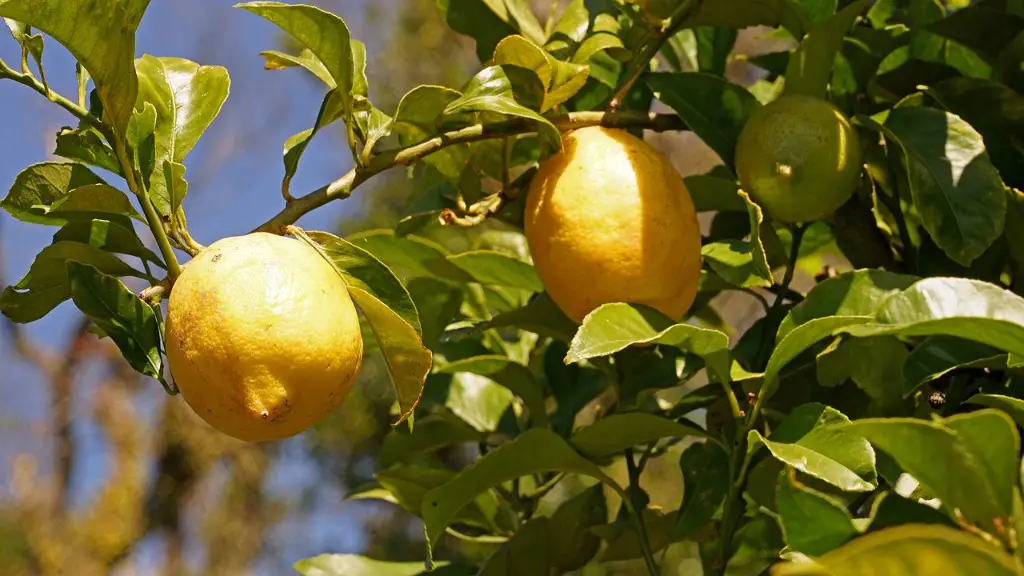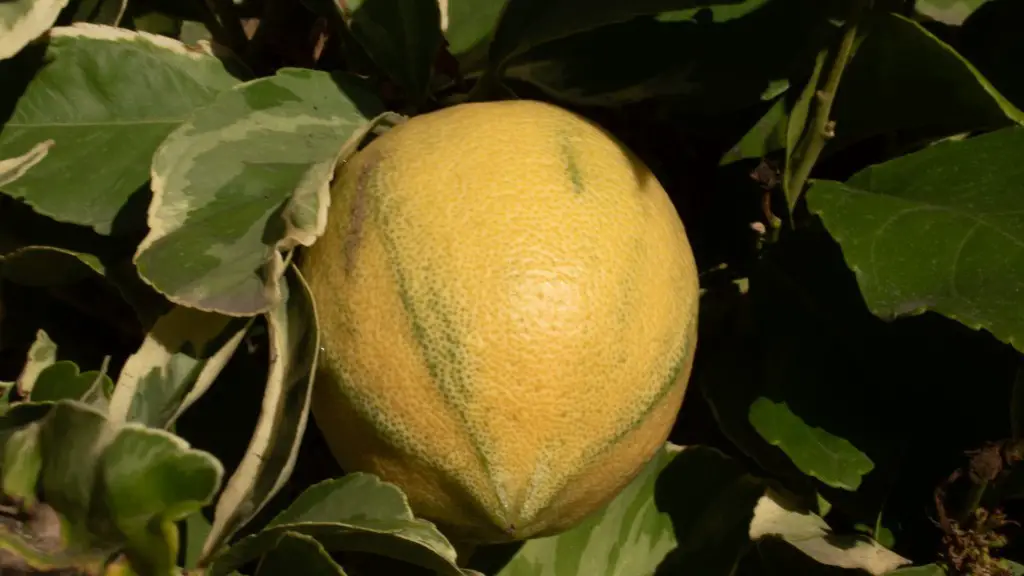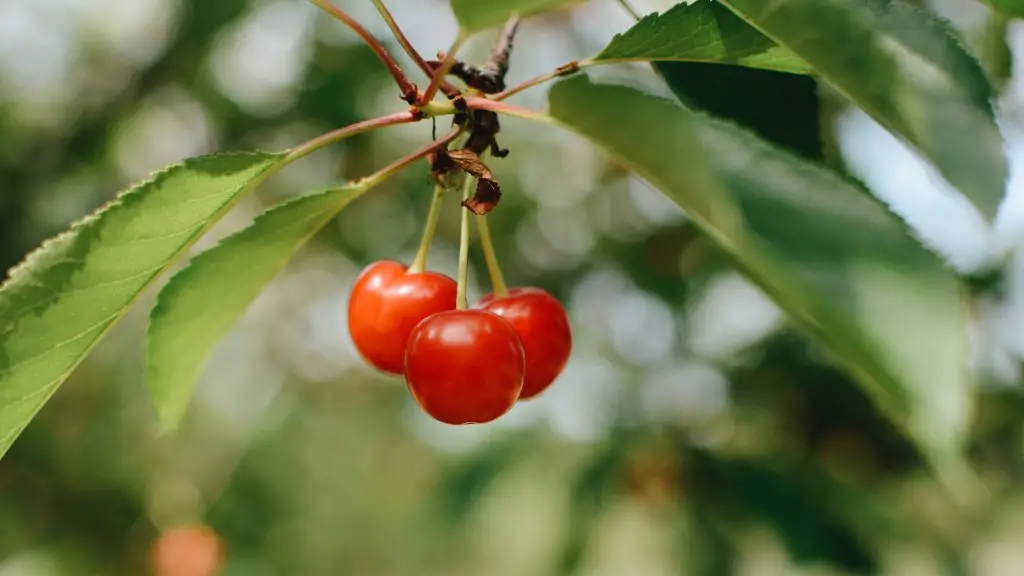Caring for a lemon tree in a pot can be very rewarding. It’s important to keep them healthy and not neglect them since they require special care to thrive. Here are some tips on how to properly maintain your lemon tree so it can provide you with lots of delicious and juicy lemons for years to come.
To start, you’ll need to make sure that the pot is well-drained. A plastic or glazed terracotta pot is ideal for this. Plant your lemon tree in a standard potting compost that’s well-aerated and water-retaining. Ensure the compost is slightly acidic, as lemons don’t do well in alkaline soils. Carefully trim any roots that look overly long and are sticking out of the pot.
Next, you’ll want to place your lemon tree in a spot with plenty of sunlight. If you don’t have outdoor space, make sure the tree is getting at least 6 hours of direct sunlight each day. If you do have outdoor space, then place the pot on the patio or balcony to get the best growth rate, but place it somewhere sheltered as lemons don’t like strong winds.
Water your tree consistently. In the warm months, it’ll need to be watered every 1-2 weeks and sprayed with a mister to keep it humid. Remember to check the soil for moisture frequently – if the soil is dry, it’s time to water. During the cooler months, you’ll need to water less frequently, about every 3 weeks. Overwatering can lead to diseased plants; under-watering can lead to fruit not growing properly.
Fertilize your lemon tree once a month with an all–purpose liquid fertilizer. This will help the tree stay healthy and productive, as it requires a plentiful amount of nutrients to flower and fruit. Additionally, be sure to prune your lemon tree regularly. Pruning deadwood, leggy growth, and crossing branches will help stimulate new growth.
With the right care, your lemon tree should be producing lemons year-round. To keep your tree healthy, be sure to inspect regularly for pests like aphids, whiteflies, and scale. If you spot any, then spray with a horticultural oil or insecticidal spray. Additionally, you should check for possible leaf diseases. If you see any, then remove the leaves and treat with an appropriate fungicide.
Caring for a lemon tree in a pot can be a rewarding experience. By following these tips, you’ll be able to produce delicious lemons year–round with minimal effort. Make sure you’re consistent with watering, fertilizing, and pruning your lemon tree, and inspect regularly for pests and diseases.
Fertilizing a Lemon Tree in a Pot
Fertilizing is an important part of caring for a lemon tree in a pot. It provides the necessary nutrients to the tree so it can grow strong and healthy and produce plenty of juicy lemons. The first step is to find a good all-purpose fertilizer that is specifically made for citrus trees. This should be applied once a month in a dosage that is outlined on the package. In addition, you may want to supplement the standard fertilizer with trace element and micronutrient complexes for a more complete nutritional profile.
It’s important to be mindful of the fertilizer you’re using, as too much nitrogen can cause foliage to become too dense and hinder fruiting. Potassium, on the other hand, can help increase flowering and fruiting. You should also be careful not to mix new and old fertilizer together. Lastly, remember that organic fertilizers will usually contain higher amounts of nitrogen, so you should be careful not to overuse them.
When applying the fertilizer, make sure to use it sparingly and focus it on the tree’s root zone. This is typically considered to be the top 12-15 cm of soil. If you’re using a liquid fertilizer, then you’ll want to mix it with water and slowly water-in the solution. It’s important to follow directions and not to oversaturate the soil. Fertilizer should also be avoided if the tree is currently stressed from a lack of water.
Fertilizing a lemon tree in a pot is an important part of its health and fruit production. Be sure to buy a well-balanced fertilizer and follow the package instructions when using it. Make sure not to apply too much fertilizer and also not to mix new and old fertilizer together. Keep an eye on the tree’s root zone and make sure the fertilizer is being applied in the right place. Last but not least, make sure not to fertilize the tree when it’s stressed from not enough water.
Planting a Lemon Tree in the Ground
If your barrel or pot isn’t large enough to contain an ever-growing lemon tree, you may have considered planting it in the ground. It can be a great way to give your lemon tree more space and ensure it a long and healthy life. But before you plant your lemon tree, you need to make sure that the soil is suitable for it.
Lemon trees thrive in warm, humid climates and do not tolerate cold weather, so make sure your climate is suitable. Secondly, the soil needs to be slightly acidic – a level of 5.5–7.5 is ideal. This can be tested with a pH meter or you can use a mulching material to reduce acidity. Finally, the soil needs to be well-draining and water-retentive – a good potting soil should provide both of these. Avoid planting in soil with clay particles, as this will inhibit drainage.
When it’s time to dig your hole, make sure it’s twice as wide and just as deep as the pot or barrel your lemon tree came in. Gently loosen the roots and add a generous amount of fertiliser into the bottom of the hole. Place the lemon tree into the planting hole and add some of the soil back into the hole to fill it in. Pack the soil gently so that it provides a firm support for the tree.
At this stage, you can use a stake to support the tree for a few weeks and then water it deeply and heavily. After planting a lemon tree in the ground it should still be in a sunny spot, sheltered from the wind, and should still be watered more frequently in summer and less frequently in winter.
Pruning a Lemon Tree
Pruning a lemon tree is an essential part of its care, as it helps keep it healthy and promotes growth. Firstly, consider any dead or diseased branches that need to be removed. Then look for water sprouts or any crossing branches that are likely to rub against each other or the trunk weakens the structure and reduces the amount of light entering the centre. Cut these back to the base. Lastly, you should look for any overly long branches and trim them back to the desired length.
It’s important to remember that pruning is not only about looks – it can also help stimulate flowering and fruiting. Always use sharp and sterile pruning tools to prevent disease, and to minimise damage to the tree. Additionally, consider investing in copper pruning tools as copper is an antifungal and antibacterial agent. If you’re not sure how to prune correctly, then it’s best to enlist the help of an experienced arborist.
Lemon trees should be pruned at least once a year, but it may benefit from more frequent pruning if the branches are becoming infested with pests or if any new growth is causing structural issues. Pruning is an essential part of lemon tree care, so make sure to do it annually and as necessary to maintain strong growth, minimise pests and disease, and promote increased blooming and fruiting.
Harvesting Lemons from a pot
Harvesting lemons from a pot is a rewarding experience – the harvest will be limited in comparison to lemons grown in the ground, but the lemons will still be full of flavour and sweetness. The best time to harvest is when the lemons are full size and yellow in hue. The exact time will vary depending on the variety and location, so keeping an eye on the lemons and waiting for them to ripen is key.
Once the lemons are harvested, they should be kept in the fridge to keep them fresh and juicy. If the lemons can’t be eaten right away, consider preserving them. One way to do this is to dry them – simply slice the lemons into thin slices and dry them in the oven or in a dehydrator. Dried lemons can last for several years.
Harvesting lemons from a pot is an enjoyable and rewarding experience. All you need to do is keep a close eye on the lemons and wait for them to reach full size and yellow in hue. Pick them when ready and store them in the fridge or consider preserving them by drying the slices. With regular pruning and fertilizing, you’ll be rewarded with plenty of delicious lemons for years to come.
Protecting Lemons From Pests
Lemon trees are often prone to pest infestations, so it’s important to take steps to protect them. The most common pests that infest lemon trees are aphids, whiteflies, and scale. Luckily, these pests can be kept in check with the right preventative measures.
Grow companion plants such as marigolds and mint to naturally repel the pests. Try to avoid using insecticides as they can be toxic and harmful to the environment. If you spot any pests, try to take action quickly. Spray with a horticultural oil or insecticidal spray and take precautionary measures to prevent reinfestation.
Additionally, inspect the tree for damage from birds, as they can cause significant damage to the fruits. Consider spiky plants around the pot or netting to protect the tree from predators. Finally, regular pruning will help keep pests in check, as it opens up the structure of the tree and allows for better air circulation.
Protecting a lemon tree from pests is essential for its health and wellbeing. Be proactive in preventing pest infestations by utilizing companion plants, avoiding insecticides, and pruning the tree on a regular basis. Additionally, keep an eye out for birds and other predators, and set up proactive measures such as netting and spiky plants to keep them away.





